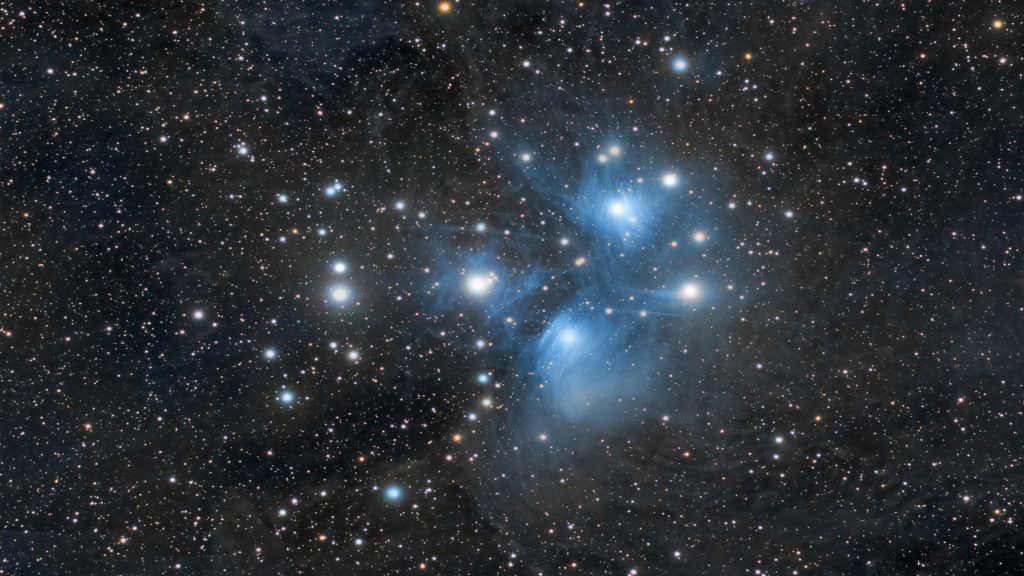Largest cosmic structure spanning 1.3 billion light-years discovered – Interesting Engineering

Named after the Incan system of counting, the Quipu spans approximately 1.3 billion light-years and contains an astonishing 200 quadrillion solar masses.14 hours ago2 days ago2 days ago2 days ago2 days ago2 days ago3 days ago3 days ago3 days ago3 days ago11 hours ago12 hours ago12 hours ago13 hours ago14 hours ago14 hours ago14 hours ago15 hours ago16 hours ago17 hours agoBojan StojkovskiRepresentational image of a large galaxy clusterSergio Perez Villar/iStockAstronomers have identified what could be the largest structure ever observed in the known universe—a vast network of galaxy clusters and superclusters containing an astonishing 200 quadrillion solar masses. Named Quipu, the structure takes inspiration from the ancient Incan system of recording numbers using knotted cords.Much like a Quipu cord, the structure is intricate, consisting of a central filament with multiple branching strands. Spanning approximately 1.3 billion light-years—over 13,000 times the length of the Milky Way—it may be the longest known structure in the universe, surpassing previous record-holders like the Laniākea supercluster.According to the scientific team which made the discovery, Quipu stands out as a highly prominent structure that is easily visible in a sky map of galaxy clusters within the target redshift range, even without specialized detection methods.The research is part of an ongoing effort to map the universe’s matter distribution across different wavelengths of light. Distant cosmic structures appear shifted toward the red part of the spectrum, a phenomenon called redshift. While objects with a redshift up to 0.3 are well-mapped, this study focuses on those between 0.3 and 0.6—meaning even farther away.The largest superstructure discovered in the researchers’ datasets was Quipu, but they also found four other massive structures. The Shapley supercluster, once considered the largest, has now been overtaken by Quipu and three others: the Serpens-Corona Borealis superstructure, the Hercules supercluster, and the Sculptor-Pegasus superstructure, which stretches between the two constellations.The structures in the new study were found between 425 million and 815 million light-years from Earth. Previous research suggests that even larger structures may exist farther out in the universe. Currently, the Hercules Corona-Borealis Great Wall, a massive concentration of matter about 10 billion light-years away, holds the title for the largest known structure, though its existence is still debated.Researchers also observed how these superstructures influence the broader universe. They affect the cosmic microwave background (CMB), the radiation leftover from the Big Bang, which is spread evenly across space. The team found that the velocity of galaxy streams in these superstructures can distort measurements of the universe’s expansion, known as the Hubble constant. Additionally, the immense gravitational pull of these structures can cause gravitational lensing, bending light and distorting distant sky images.The study noted that future research could explore how these large-scale structures have influenced galaxy evolution. While these structures are temporary, as the universe’s expansion gradually pulls clusters apart, their immense size makes them significant.“In the future cosmic evolution, these superstructures are bound to break up into several collapsing units. They are thus transient configurations. But at present they are special physical entities with characteristic properties and special cosmic environments deserving special attention,” the researchers observed.Thus, the five superstructures also account for 45% of the galaxy clusters, 30% of the galaxies, and 25% of the matter in the observable universe, making up 13% of the universe’s total volume.The study has been published in the open-access pre-print website arXiv.Stay up-to-date on engineering, tech, space, and science news with The Blueprint.By clicking sign up, you confirm that you accept this site’s Terms of Use and Privacy PolicyBojan Stojkovski Bojan Stojkovski is a freelance journalist based in Skopje, North Macedonia, covering foreign policy and technology for more than a decade. His work has appeared in Foreign Policy, ZDNet, and Nature.2 days ago2 days ago2 days agoPremiumIE PROFollow





